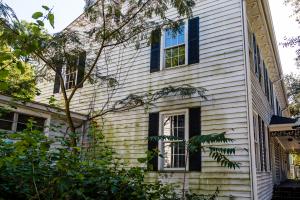
Protecting Basements from Water Intrusion and Mold Growth: Prevention and Mitigation Strategies
Earl Carr, Jr., president of Gulf 52 in Hammond, Louisiana, highlights the importance of proactive defense when it comes to basement protection. “Water doesn’t need much of an opening to cause damage. Moisture combined with poor airflow and organic building materials creates a perfect environment for mold,” said Carr.
Gulf 52 specializes in structural protection and water damage mitigation, serving both residential and commercial properties throughout flood-prone regions of South Louisiana.
Common Causes of Basement Water Intrusion
Basement leaks and water buildup are frequently caused by a combination of exterior and interior factors. The most common include:
Poor surface drainage
Inadequate grading around the foundation
Cracks in walls or flooring
Faulty sump pumps or drainage systems
Hydrostatic pressure
Condensation from high interior humidity
During heavy rainfall or rising groundwater events, pressure builds up around the basement’s foundation. Water finds its way through cracks, unsealed joints, or porous concrete. Over time, even a slow leak can result in persistent dampness, musty odors, and mold proliferation.
Exterior Defenses Against Water Intrusion
Preventing water from reaching the foundation is the most effective first line of defense. Several exterior systems and techniques help divert water away from the basement:
1. Proper Grading
Soil should slope away from the house, allowing rainwater to flow away from the foundation. A minimum slope of six inches over ten feet is generally recommended.
2. Gutter and Downspout Maintenance
Clean, functional gutters and extended downspouts prevent water from pooling near basement walls. Downspouts should discharge at least five feet from the structure.
3. French Drains and Swales
French drains and landscaping swales redirect surface and subsurface water away from the home’s perimeter, reducing hydrostatic pressure near the basement walls.
4. Exterior Waterproof Coatings
Waterproof membranes and coatings can be applied to the exterior of foundation walls to block water infiltration through porous materials.
Interior Basement Waterproofing Measures
When exterior improvements are not enough, or when moisture persists inside, interior waterproofing strategies become necessary:
1. Sump Pumps
Sump pumps remove water from a designated pit and direct it away from the home. Battery backup systems ensure functionality during power outages common during storms.
2. Interior Drain Tile Systems
Installed along the basement’s interior perimeter, these systems collect rising groundwater and channel it into a sump pump or gravity-fed drain.
3. Sealants and Epoxy Injections
Cracks in walls and floors can be sealed using hydraulic cement, epoxy, or polyurethane injection systems. These solutions block active leaks and reinforce structural integrity.
4. Dehumidification
Basements tend to retain moisture due to poor airflow and cool temperatures. Dehumidifiers help maintain indoor humidity levels below 60%, limiting condensation and mold potential.
Recognizing Early Warning Signs
Detecting water intrusion and mold growth early is key to minimizing damage and cost. Common signs of moisture problems in basements include:
Water stains on walls or floors
Musty or earthy odors
Efflorescence (white, chalky deposits) on masonry
Peeling paint or bubbling wallpaper
Warping of baseboards or flooring materials
Mold growth on wood, drywall, or stored items
Regular inspection—especially after storms—can identify these signs before major issues develop.
Mold Risk and Health Considerations
Once moisture is present, mold spores can begin colonizing within 24 to 48 hours. Mold thrives in dark, damp environments and feeds on materials like wood, paper, and insulation.
Unchecked mold growth poses risks to both structural components and indoor air quality. Long-term exposure may contribute to respiratory irritation, allergic reactions, and other health concerns—particularly for sensitive individuals.
Proper ventilation, moisture control, and material removal are necessary to prevent or remediate mold once it appears.
Post-Intrusion Response and Long-Term Planning
If a basement does experience water intrusion, the response should be swift and thorough:
Extract standing water immediately
Remove wet materials such as carpet, insulation, or drywall
Dry all structural surfaces using fans and dehumidifiers
Disinfect affected areas to remove mold spores
Repair the source of the leak before reconstruction
For long-term resilience, consider upgrading basement materials to water-resistant alternatives. Concrete-based flooring, mold-resistant drywall, and metal or PVC trim can reduce vulnerability in future events.
Morgan Thomas
Rhino Digital, LLC
+1 504-875-5036
email us here
Visit us on social media:
Facebook
Distribution channels: Building & Construction Industry, Culture, Society & Lifestyle, Real Estate & Property Management
Legal Disclaimer:
EIN Presswire provides this news content "as is" without warranty of any kind. We do not accept any responsibility or liability for the accuracy, content, images, videos, licenses, completeness, legality, or reliability of the information contained in this article. If you have any complaints or copyright issues related to this article, kindly contact the author above.
Submit your press release

